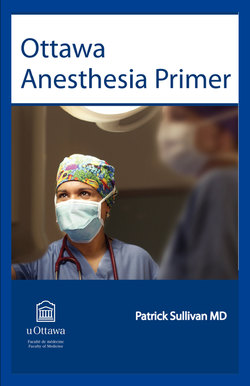Читать книгу Ottawa Anesthesia Primer - Patrick Sullivan - Страница 77
На сайте Литреса книга снята с продажи.
ОглавлениеA BASIC MAD POSTER
Before proceeding with intubation prepare for success with the mnemonic “A BASIC MAD POSTER”
“A BASIC MAD POSTER” preparation for intubation explained.
Assessment: The preparation for intubation begins with an assessment of the airway.
Bag-mask: A bag-mask system should be checked and capable of delivering oxygen with positive pressure.
Airways: Oropharyngeal and nasopharyngeal airways should be immediately available.
Suction: A tonsillar Yankauer suction device with a tapered tip should be immediately available next to the patient’s head.
Intravenous: Intravenous access should be established.
Capnometry: Capnometry (ETCO2 monitoring) should be immediately available to confirm correct endotracheal placement.
Monitors: Monitors, including pulse oximetry, ECG, and blood pressure (BP), should be attached.
Audible: The saturation monitor should be configured to provide an audible tone during the procedure.
Drugs: Drugs should be prepared and labelled.
Position: The patient should be in an optimal position for tracheal intubation.
Oxygen: Oxygen should be administered to preoxygenate the patient prior to the procedure.
Stylet: A stylet should be positioned in the ETT.
Tape: Tape should be immediately available to secure the ETT.
ETT: An appropriate-sized endotracheal tube and functioning laryngoscope should be prepared and checked.
Rescue: Rescue medications and backup airway plans should be considered before intubation.
Common rescue medications include midazolam, fentanyl, and propofol for sedation. Ephedrine and phenylephrine may be required to treat hypotension after intubation. Prior to proceeding with intubation, there should be clearly thought out airway backup plans. Plans may include having special equipment present (e.g., Glidescope or LMA™).
Clinical Pearl:
Always ensure that the saturation monitor emits an audible tone when performing tracheal intubation. The audible tone provides immediate information to the operating room team about the patients’ heart rate, saturation, and well being that may otherwise go unnoticed during the procedure.
